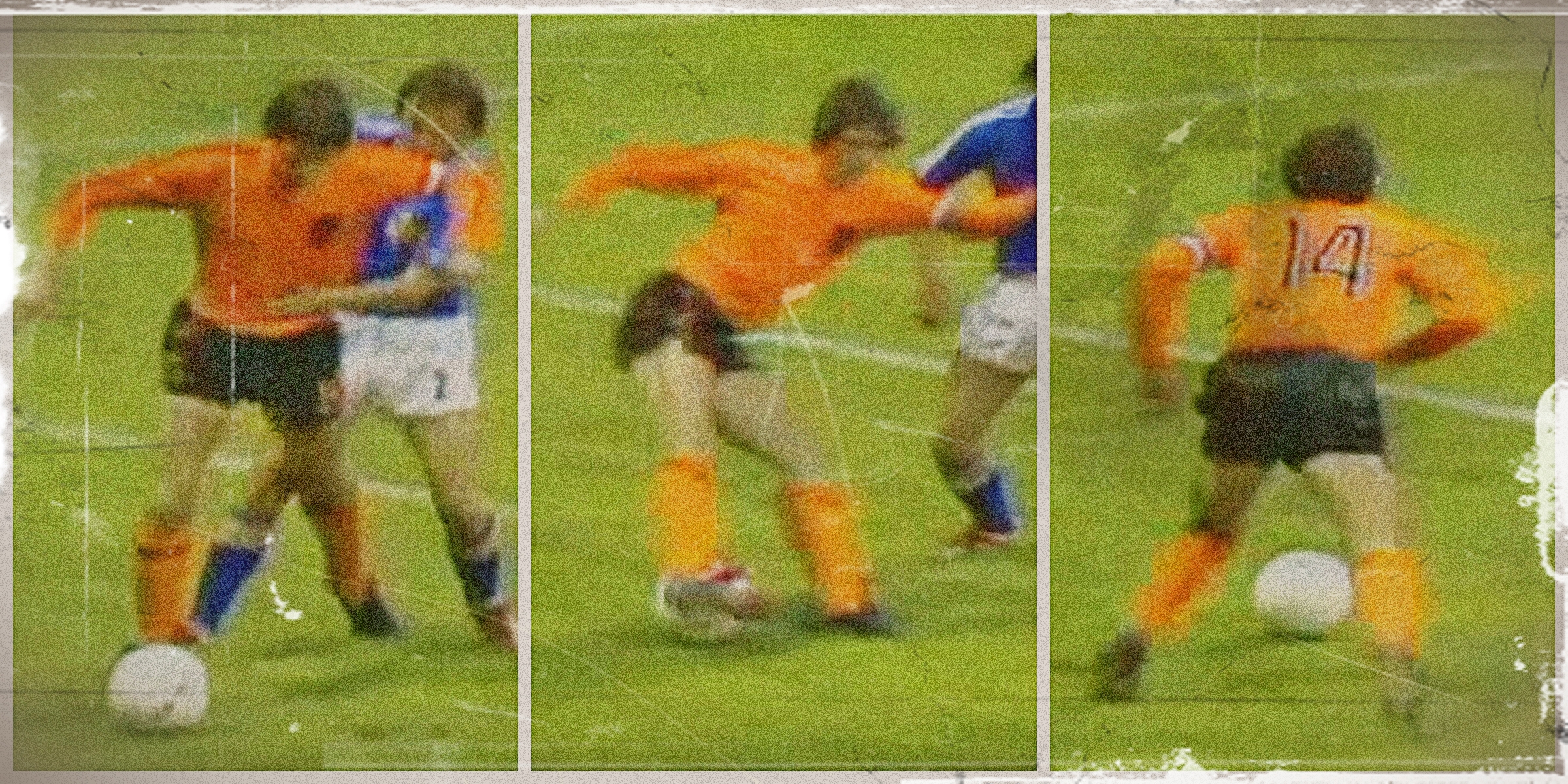Genius abridged in one movement.
You’ll read all sorts of glowing superlatives and heartfelt tributes about Johan Cruyff over the next few days, following his premature death at the age of only 68. It tells you something about the mark of the man that many respected scribes have excelled themselves with superlative prose in his honour.
He was and is both the architect and the muse of modern football – or at the least the ideal template of the sport that many seek to replicate. But for most of us, a single beguiling moment in time sums up the legendary Dutchman in a way that no list of accolades or complex tactical formations ever could.
The ‘Cruyff turn’ is at once art, ballet, mathematics and sport. Rarely if ever has a singular action that didn’t result in a goal captivate generations and lead to youngsters and pros alike making dizzy fools of themselves trying to emulate such mastery of space, time, body and ball.

The iconic moment took place at Dortmund’s Westfalenstadion, during the 1974 World Cup game between the Netherlands and Sweden. Midway through the first half, Dutch midfielder Arie Haan spread the play out to his captain on the left flank, who was closely marked by Swedish defender Jan Olsson.
That’s when it happened. Cruyff readied himself like a pianist cracking his fingers, all the while being buffeted away from goal by the defender at his rear. The lithe number 14 pulled back his right foot to swing a cross into the area and Olsson confidently lunged his weight forward to make the block.
Except the cross never came. In a devious twist that would make M. Night Shyamalan blush, Cruyff inverted his momentum by dragging the ball behind his left foot with the instep of his right. Poor Olsson paused for a moment before realising there’d been a glitch in the matrix and he was suddenly alone in the world.
In hindsight, it plays out like a pop culture reference point. The exaggeration of the arms is Ian Curtis in his Joy Division pomp. The swing of the arse is two parts Mick Jagger and one part Beyonce. The swishing mop belongs in Manchester’s Hacienda, whilst those magical feet are Michael Jackson cheating physics at Motown 25.

It is the Life of Johan concentrated into two yards and half a second. His strange contortion is neither forced nor clumsy, more the majestic reward for hours of practice. And of course his famous jersey is a two-striped compromise of the team’s Adidas outfit to his personal Puma deal. Only Cruyff.
Olsson, the unwitting stooge of the piece, remains grateful to have briefly stood in the same frame. He perversely calls it the “proudest moment” of his career. That may sound like a bizarre thing to say, but the gracious Swede is simply acknowledging his part as the straight man in football’s most brilliant joke.
Cruyff and David Bowie died weeks apart, and it feels somewhat trite to compare the two. But it’s not without reason. They were both other-worldly baby boomers who took something special special and made it better. Bowie draped his arm around Mick Ronson and changed the world; two years later, the Dutchman turned it on its axis.
Cruyff’s death left the football world shocked. He seemed to be winning his fight against lung cancer, and even reported that he was leading “2-0 in the first half”. But whilst we were all looking the other way, he quietly slipped away. It is strangely apt.












































